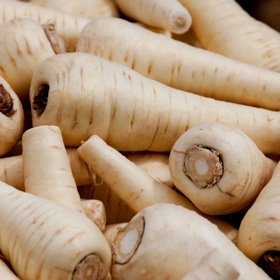
It’s not only the scarf, coat and gloves that will keep you feeling cosy this winter. The food that you eat can be just as important, yet how many of us give such matters a moment’s thought?
This guide will explain exactly which foods are warming and which are cooling, so your next grocery shopping list can help you banish the seasonal chill.
As winter approaches our bodies need more warmth. That’s why you’re standing next to that radiator or huddling under a blanket. It’s also the reason that salads are instinctively off the menu and stews are back on. But it’s not just to do with raw or cooked meals: certain foods have a thermal nature that affects how we can deal with the cold.
What exactly is it that distinguishes a warming food from a cooling one? Generally speaking, warming foods raise the metabolism and cooling foods slow it down. In order to maintain good health, we need to strike a balance but, at certain times of the year, the scales tip in favour of one type over another.
The important benefits of a winter’s shopping list.
Warming foods are especially recommended for anyone who lacks energy or feels tired, but they are also ideal for those suffering from depression. Less obviously, they are often recommended for bad circulation, flatulence, improving concentration and preventing infections. As less energy is needed to create digestive heat from them, there’s more energy available to aid digestion and the absorption of nutrients.
How do they work?
The level of warmth is influenced by two things: the inherent qualities of the food itself and its method of preparation. Whereas ginger has a distinct natural heat, fruits do not. But, if you stew them, and maybe add some cinnamon, they become warming. Winter seasonal root vegetables and greens have neutral qualities, but once cooked become warming foods. Slow cooking, like roasting or soup-making, will add more warming qualities to foods than, say, a stir-fry.
There are still some benefits to having cool raw foods in winter, like green smoothies and vegetable juices, as they contain enzymes and other nutrients that can be destroyed by cooking. Make sure, though, that you limit your consumption of these and enjoy them at room temperature rather than chilled. You can also warm them up with some ginger, fennel or cardamom.
Foods for your winter shopping list
• Soups and stews
• Cooked squash, carrots, potatoes, cabbage, kale, sweet potatoes, pumpkin, turnips, leeks, onions, peas
• Rice, barley, millet, corn, oats
• Black soy bean
• Butter
• Almonds
• Lamb, venison
• You can eat small amounts of chicken, turkey, fish or beef
• Eat cooked fruit such as peaches and cherries
• Add ginger, garlic, cardamom, cinnamon, nutmeg, black pepper, thyme and rosemary to dishes
• Only eat small amounts of sugary foods
Cold foods to avoid
• Chilled or raw food (including salads and raw fruit)
• Juices
• Tofu
• Milk, yoghurt, cheese
• Peanuts
• Excess sugar or salt
• Iced drinks and ice cream
Naturopath/Herbalist Lloyd Gee is available at Shine, Church Street to assess your thermal balance, recommend beneficial foods and make up special herbal formulas to help you keep healthy through the winter months.
By Lloyd Gee



